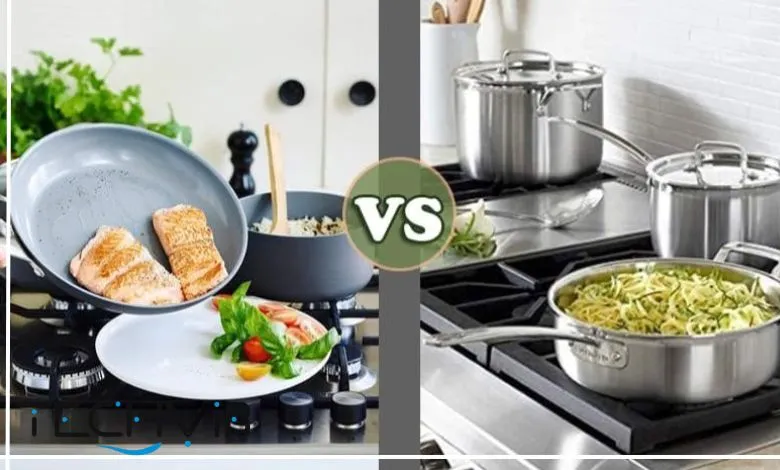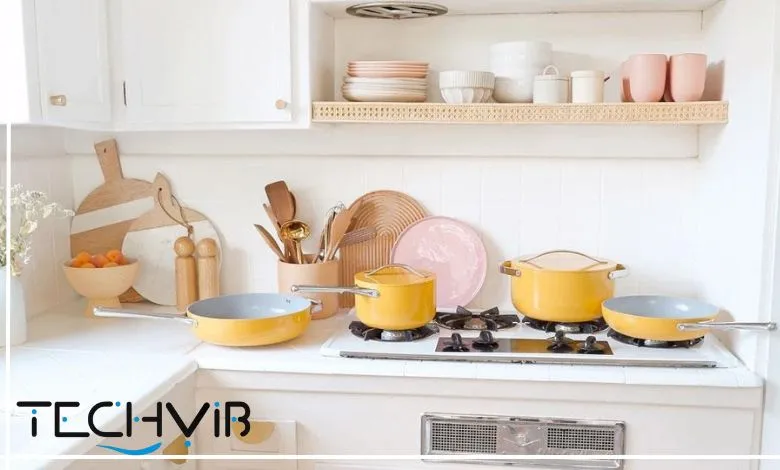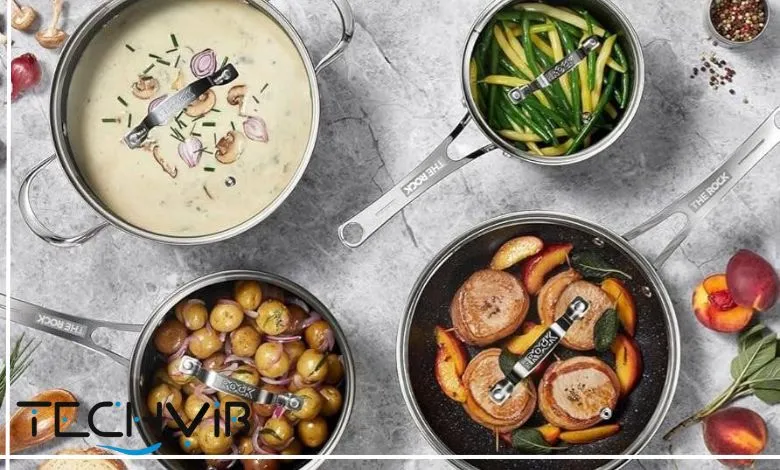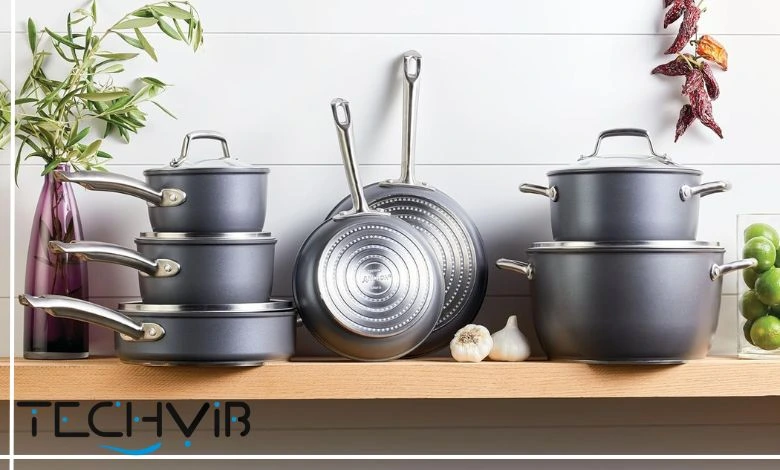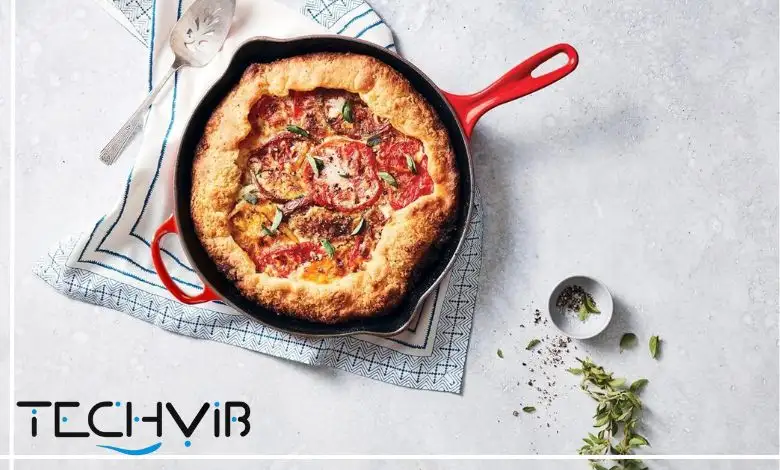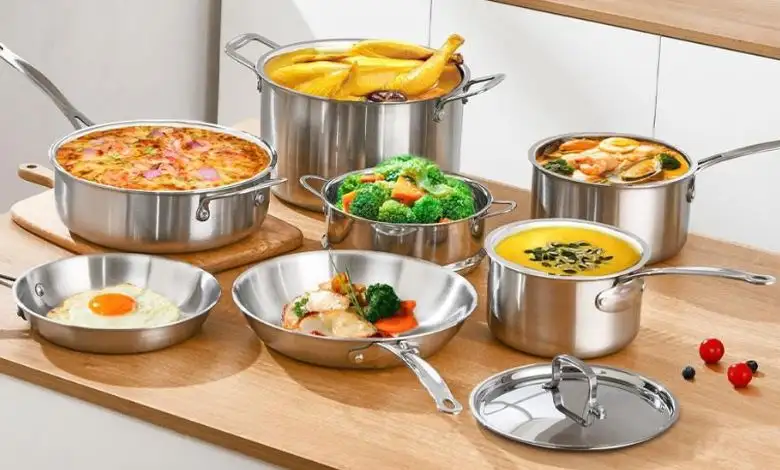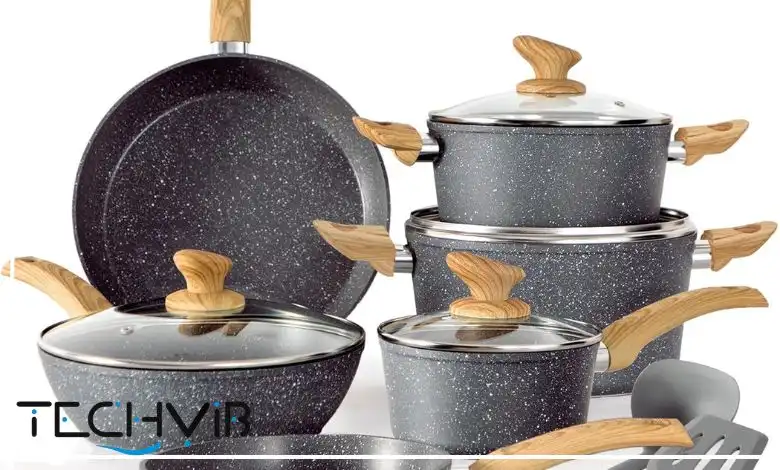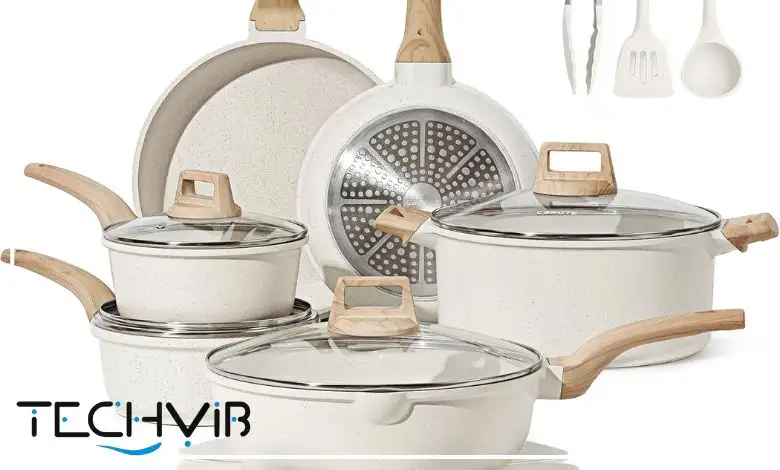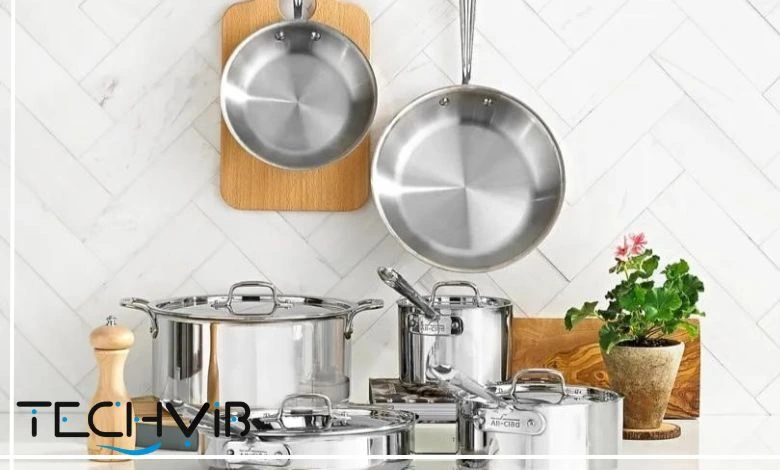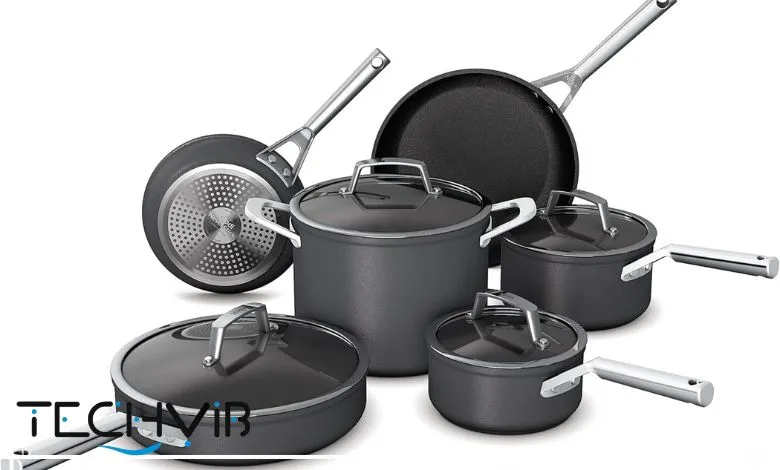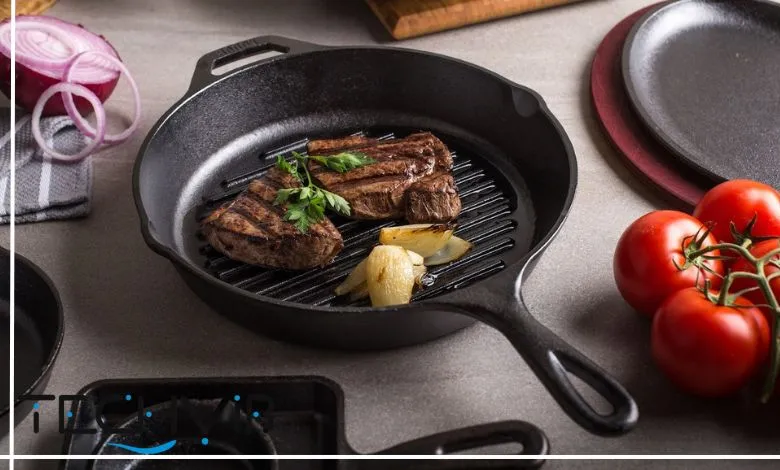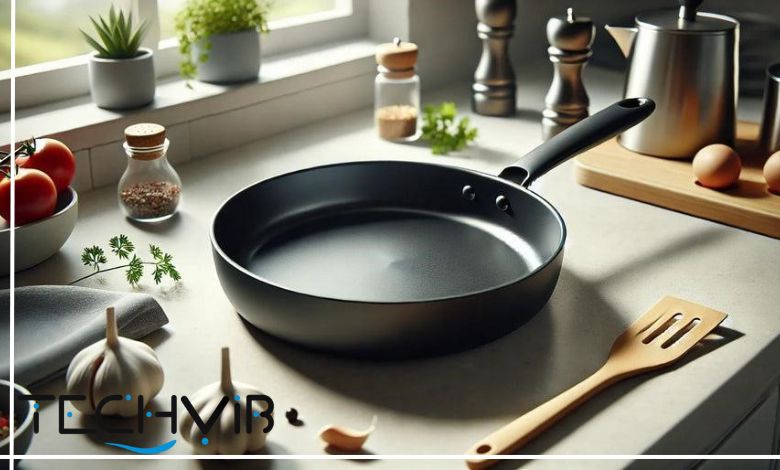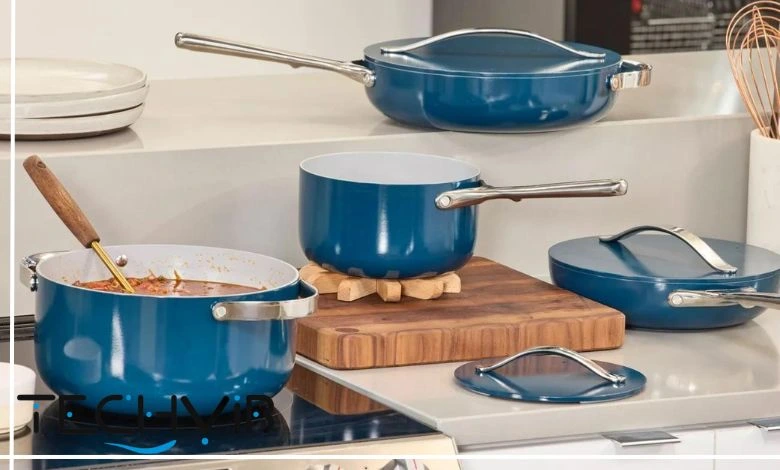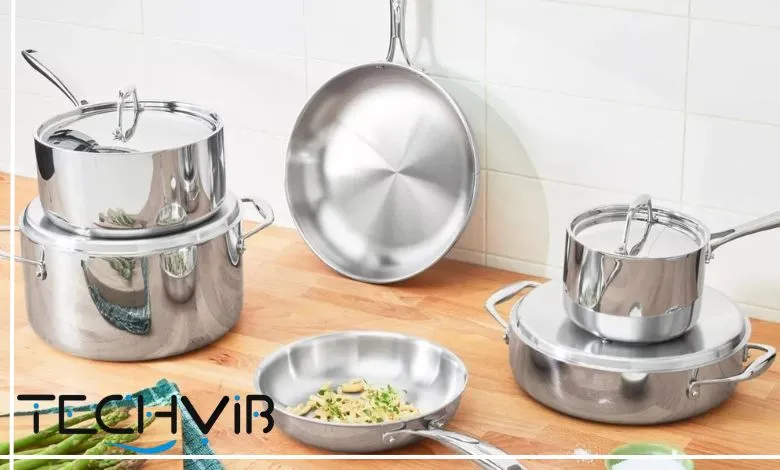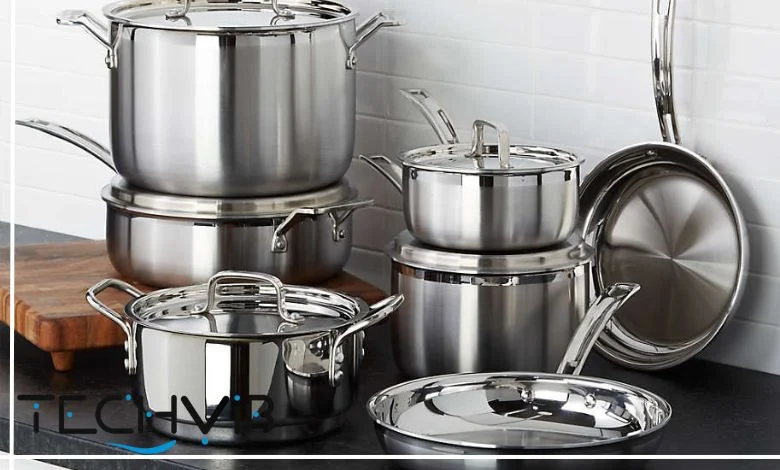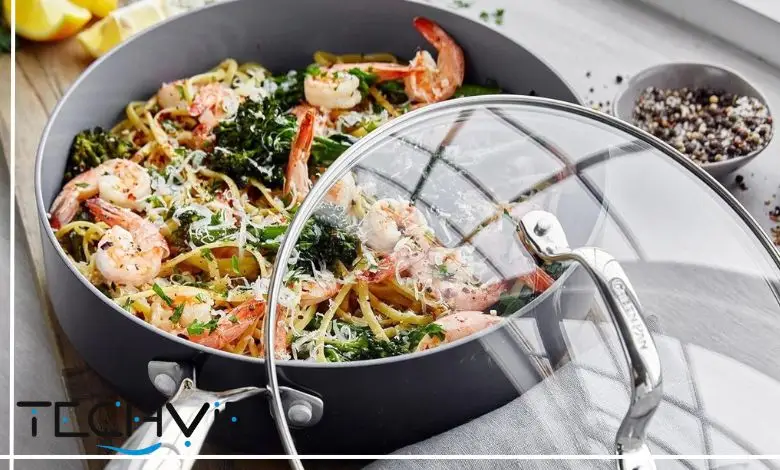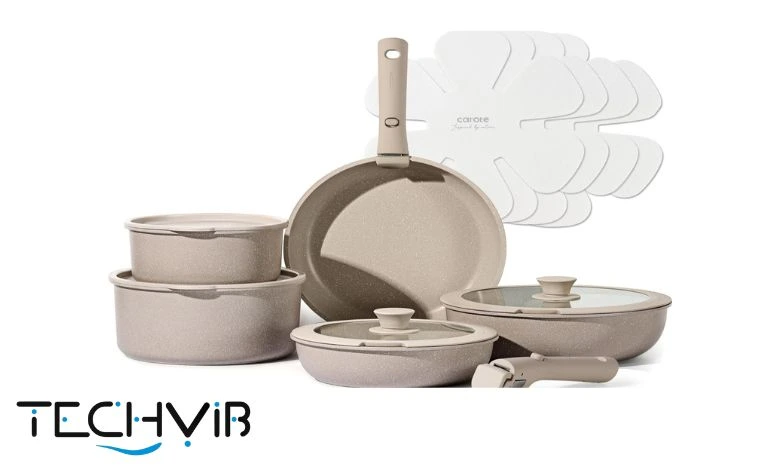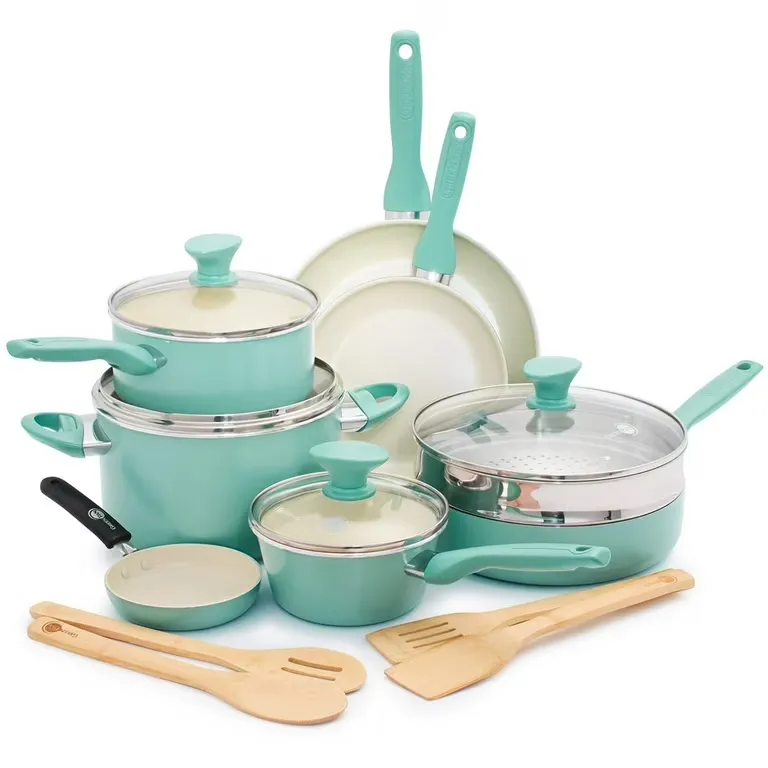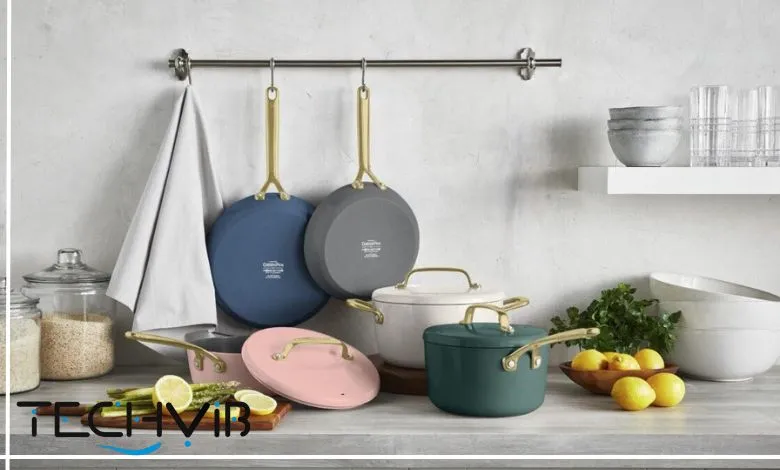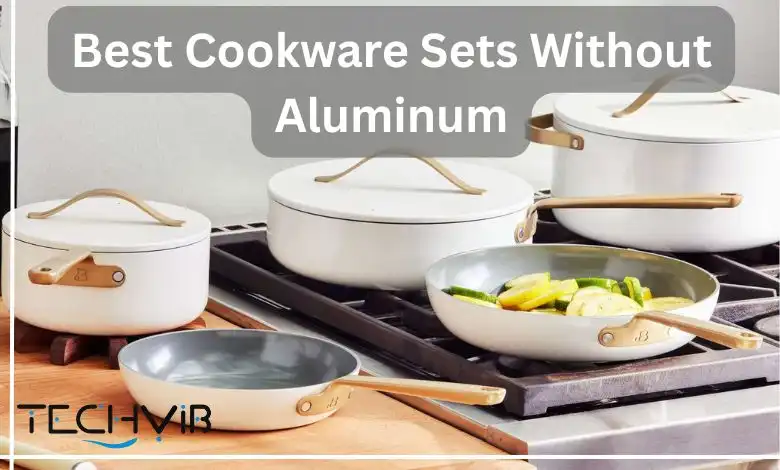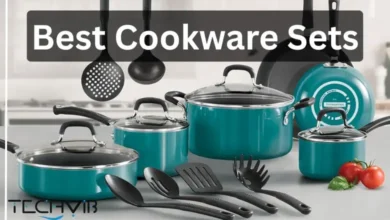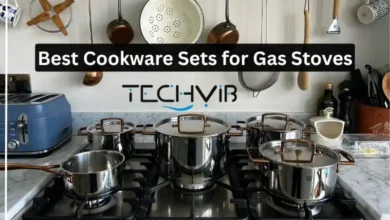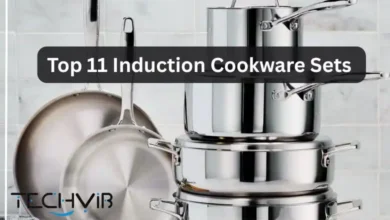Understanding Different Cookware Materials
Cookware plays a pivotal role in every kitchen, transforming simple ingredients into delightful meals through the magic of materials engineered for optimal performance. Cookware materials vary widely, offering solutions for everything from quick weeknight dinners to elaborate feasts, ensuring there’s something for every budget and need.
Table of Contents
Join us as we explore the intricacies of these materials, uncovering how they can enhance your cooking experience and help you make informed choices for a more efficient, enjoyable kitchen. For affordable starters, explore the best budget cookware sets.
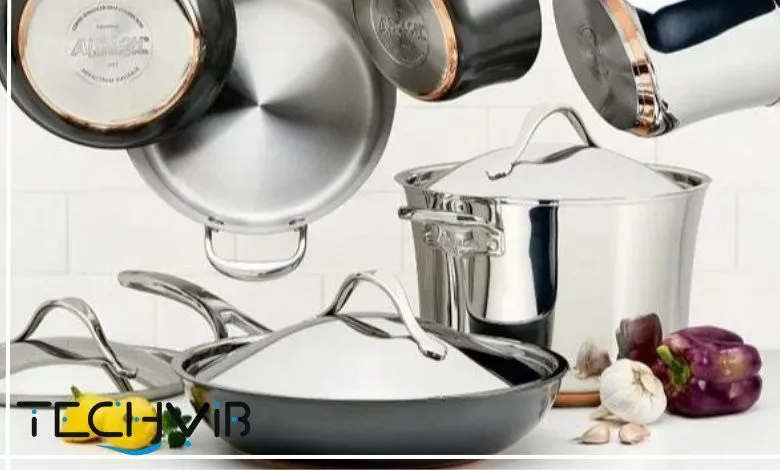
Why Is Cookware Made from Different Materials?
Various materials are used in cookware because they offer distinct properties that influence how heat is transferred during cooking. For instance, some metals excel at conducting heat quickly and evenly, which is crucial for tasks requiring precise temperature adjustments, while others retain warmth for longer periods, ideal for slow-cooking methods.
Additionally, factors like reactivity play a role; certain materials won’t interact with acidic ingredients, preventing off-flavors or discoloration in dishes.
Overall, the choice of the best type of cookware material impacts not just performance but also the longevity of the cookware, as some resist warping or corrosion better than others under repeated use.
Beyond heat dynamics, materials differ in their ability to handle various cooking environments and user needs. Lightweight options make handling easier for everyday tasks, while heavier ones provide stability on the stovetop. Some prioritize non-reactivity for health-conscious cooking, avoiding the leaching of metals into food, whereas others focus on affordability without sacrificing basic functionality.
For those setting up their first home, consider exploring the Best Cookware Sets for First Apartments to find starter options that match these material benefits.
The Different Types of Cookware Materials
There are at least 10 major types of cookware materials commonly used today, including stainless steel, non-stick coated, cast iron, carbon steel, aluminum, copper, ceramic, stone (such as granite-coated), enameled cast iron, and glass. Each brings unique characteristics to the table, shaped by its composition and manufacturing processes.
Stainless Steel
Stainless steel emerges as a kitchen staple, forged by alloying iron with chromium and nickel to create a resilient surface that resists rust and staining, often in grades like 18/10 where 18% chromium provides corrosion resistance and 10% nickel enhances durability and shine. This material undergoes a meticulous manufacturing process starting with material selection. It’s followed by cutting sheets, grinding edges, stretching into forms, and sometimes layering with aluminum or copper cores through cladding to improve heat conductivity, ensuring even distribution without hotspots.
Its strength lies in being non-reactive, meaning it won’t alter the taste of acidic foods like tomatoes or vinegar. Its ability to withstand high temperatures makes it ideal for searing meats or deglazing pans for flavorful sauces. Plus, it’s dishwasher-safe and can transition seamlessly from stovetop to oven, handling daily rigors with minimal wear over decades of use. If you’re cooking on a flat surface, check out the best cookware for electric cooktops for compatible sets. Among the best metals for cookware, stainless steel often ranks high.
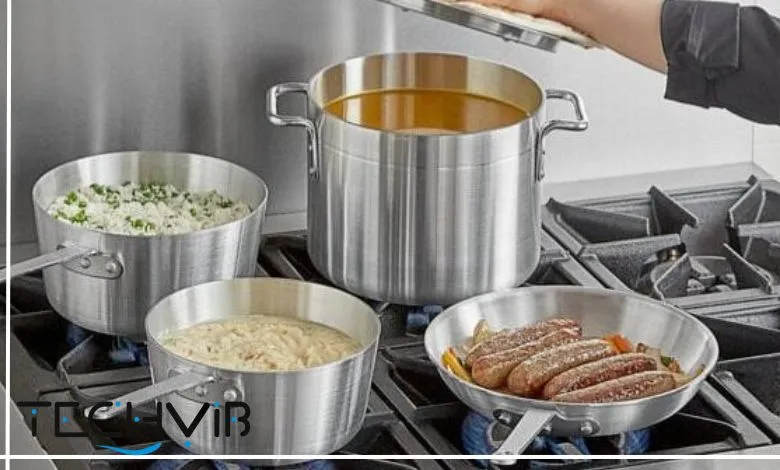
Non-Stick Coated
Non-stick coated cookware starts with a base of aluminum or steel, then gets a layer of synthetic or ceramic compounds baked on at high temperatures to form a slick barrier. It’s the process that involves preparing the metal substrate, applying the coating in multiple layers for durability, and curing it to achieve a low coefficient of friction that prevents food from adhering.
This innovation often uses PTFE or water-based oils free from PFOA and PTFE in modern versions. It boasts properties like chemical resistance, low water absorption, and the ability to withstand up to certain heat limits without releasing toxins. For affordable options, dive into the Best Nonstick Cookware Sets for $100 to see value-packed choices. This makes it a strong contender for cooking pan material in quick meals.
Cast Iron
Cast iron, born from molten iron poured into sand molds and cooled to form rugged pieces. It develops a natural seasoning over time that enhances its performance, with the manufacturing involving smelting iron-carbon alloys exceeding 2% carbon content. This process allows for intricate shapes that gain a protective scale upon cooling for initial corrosion resistance.
It’s renowned for its superior heat retention and even distribution due to high density, though it’s a slower conductor requiring patience to preheat, this material adds trace iron to foods beneficially and thrives under high temperatures without warping. It’s prized for deep-frying or baking cornbread where it holds onto heat like a steadfast companion.
It delivers even cooking and that coveted crust on meats while thriving in ovens or over campfires, all while promising generational longevity with proper care. Explore cast iron cookware benefits for more on its nutritional perks.
Carbon Steel
Carbon steel takes shape through forging or stamping high-carbon iron sheets, resulting in lightweight yet tough pans that season similarly to cast iron for a naturally slick finish. It’s composed of about 99% iron and 1% carbon which grants it exceptional strength and heat responsiveness. In other words, it heats up five to twenty times faster than other metals while withstanding temperatures up to 800°F or more in some cases.
It’s the choice for high-heat stir-fries or searing where it responds swiftly to flame changes and builds flavor layers in professional kitchens without the bulk. Carbon steel is ideal for techniques like wok cooking or achieving a perfect crust on steaks. For intense sessions, look at a cookware set for high heat designed for such demands. It’s often considered one of the best cookware set materials for responsiveness.
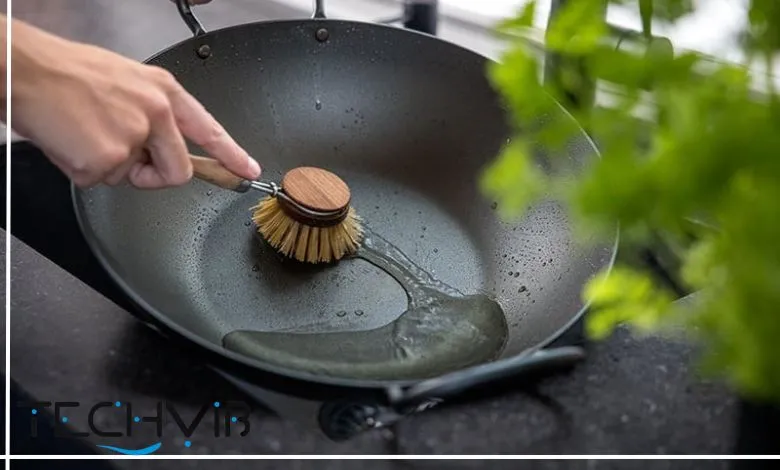
Aluminum
Aluminum cookware is crafted by casting or anodizing soft metal into forms that heat up rapidly. It’s often treated to harden the surface against scratches, starting with raw materials like bauxite refined into alumina then electrolyzed into aluminum. It’s malleable, lightweight, and boasts thermal conductivity sixteen times that of stainless steel for quick, even heating.
Its nonmagnetic, corrosion-resistant nature, enhanced by an oxide layer. Aluminum is ductile and abundant, perfect for everyday affordability, suiting quick tasks like boiling water or making sauces.
It’s best paired with coatings to prevent reactions with acidic foods. For health-focused bakers, consider the best non-toxic bakeware options. Aluminum is a key player in the cookware materials guide for budget-conscious cooks.
Copper
Copper, hammered or spun from sheets into elegant vessels, sometimes lined with tin or steel, shines in precision cooking like candy-making or reductions. Its superior conductivity, 60% higher than aluminum and vastly outperforming stainless steel, allows instant temperature tweaks for delicate results that impress in both form and function.
Hygienic, durable, and corrosion-resistant, it distributes heat evenly to prevent scorching, making it ideal for sauces or delicate proteins. However, its reactivity with acids necessitates linings. Additionally, its antimicrobial properties add a health bonus, making it a favorite among pros for tasks requiring fine control over heat.
For those with specific appliances, Cookware Sets for Electric Stoves can ensure compatibility. Copper often stands out in discussions of what material is best for pots and pans.
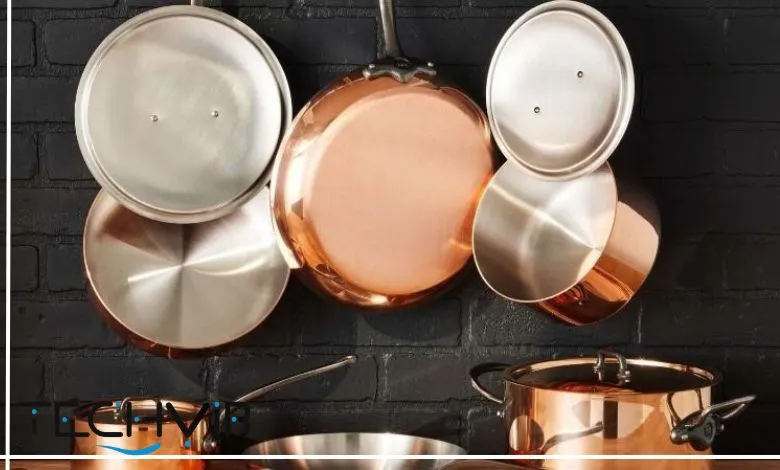
Ceramic
Ceramic pieces are kiln-fired from clay mixtures, creating inert surfaces that bake evenly. They are ideal for casseroles or roasting, where gentle heat preserves nutrients and flavors without any metallic interference. These pieces are produced by forming sand-based materials without PFAS, often over aluminum bases for heat distribution, and cured to achieve a non-porous, scratch-resistant finish that can withstand up to 1,220°F in some cases.
With properties like thermal resistance, non-reactivity, and a natural non-stick surface when seasoned lightly, it is free from harmful chemicals. This makes it safe for high-heat tasks while being lightweight and easy to clean. It is perfect for health-focused baking or simmering where precise temperature management is key.
To learn more, read about ceramic cookware and its eco-friendly appeal. It’s a favorite for non-toxic cookware materials due to its chemical-free nature.
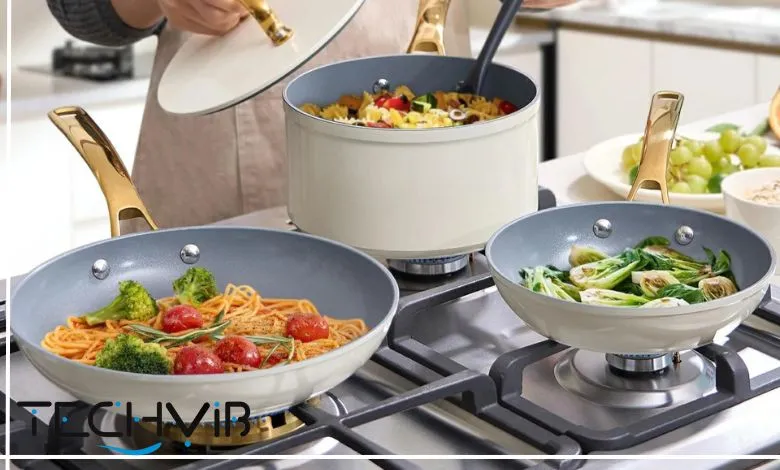
Stone (Granite-Coated)
Stone-coated cookware, like granite varieties, involves fusing mineral particles onto aluminum bases at extreme heat, yielding scratch-resistant exteriors that mimic natural rock. This blend of aesthetics and practical non-stick ease is ideal for everyday frying or simmering. It is created by applying a resin-infused granite layer that is durable against rust, requires little oil, can handle up to 500°F, and distributes heat evenly for healthier meals.
This coating’s non-porous nature prevents sticking and makes cleanup simple, ideal for low-oil stir-fries or sautéing veggies, where its heavyweight stability and eco-friendly composition free from PFOA shine, offering longevity without reacting to foods. Compact spaces might benefit from cookware sets for small apartments. Stone is often highlighted as the best pot material for its durability.
Enameled Cast Iron
Enameled cast iron combines the heft of cast iron with a glass-like coating fused in ovens, preventing rust and allowing acidic foods like tomatoes to simmer safely. This pot and pans’ best material shines in braises or stews that benefit from steady, flavorful heat. This cookware is manufactured by pouring molten iron into molds, then applying porcelain enamel from powdered glass that’s fired at high temperatures for a non-porous, hygienic seal.
This dual nature offers excellent heat retention and even distribution without needing seasoning. It is resistant to chipping in quality pieces and non-reactive for long simmers. This makes it versatile for slow-cooking or oven-to-table presentations where durability meets ease of cleaning.
For microwave users, the Best Cookware for Convection Microwave Ovens provides specialized insights.
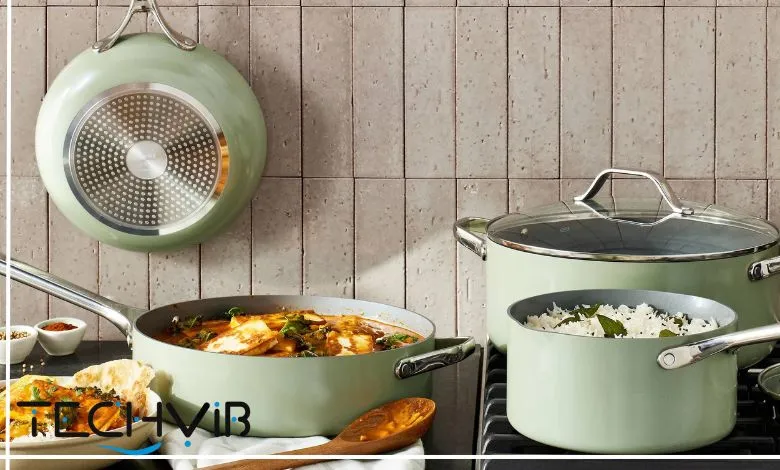
Glass
Glass cookware, tempered through controlled heating and cooling of borosilicate blends, offers transparency for monitoring bakes or microwaves. It excels in oven-to-table presentations where non-reactivity keeps meals pure and simple. This cookware is produced by melting silica sand with soda ash and limestone in furnaces, then forming it into shapes via floating or molding for high thermal shock resistance.
Its amorphous solid structure provides chemical durability, electrical insulation, and the ability to withstand extreme temperatures without leaching. This makes it ideal for baking casseroles or reheating where visibility prevents overcooking. However, it is brittle and best suited for gentle, even heat applications like microwaving or oven use.
For visibility, the Best Cookware Sets with Glass Lids add convenience. If you ask what cookware material is best for baking, glass is often the perfect choice.
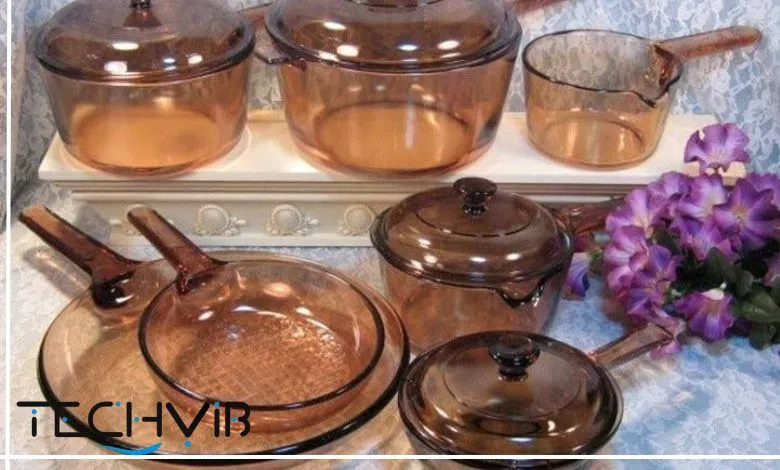
What’s the Best Cookware Material
The ideal cookware material combines durability, even heat distribution, and versatility for a range of tasks. It often features non-reactivity to preserve food flavors and ease of maintenance for long-term use. What’s the best cookware material depends on your specific needs, but stick around to explore specifics on top contenders and find what fits your style. For newcomers, the best cookware sets for beginners can simplify the decision.
Stainless Steel
To maintain stainless steel cookware, start by allowing it to cool after use, then wash with warm soapy water using a soft sponge to remove residues. For stubborn spots, create a paste from baking soda and water, apply it gently, and rinse thoroughly to avoid scratches.
Avoid abrasive pads or harsh cleaners like bleach, as they can dull the surface. Instead, for discoloration, simmer vinegar or lemon juice in the pan before scrubbing lightly.
Dry immediately with a cloth to prevent water spots, and store in a dry place to keep its shine intact over the years of service. For lasting durability, the best cookware to last a lifetime highlights top performers. Stainless steel is a top pick for the best material for induction cookware.
Pros
- Highly durable and long-lasting
- Non-reactive with foods
- Distributes heat evenly when clad
- Dishwasher-safe
- Oven-compatible up to high temperatures.
Cons
- Can stick without proper preheating
- Heavier than some alternatives
- May develop discoloration over time
- Requires oil for non-stick performance
- Pricier for quality sets.
Non-Stick
For nonstick cookware upkeep, let the pan cool completely before washing to prevent warping, then use mild dish soap and a soft cloth or sponge to wipe away debris.
Avoid metal utensils or abrasive scrubbers that could scratch the coating; instead, soak in warm water for tough bits and gently clean.
Never use aerosol sprays or high heat, as they degrade the surface, and hand-wash rather than dishwashing to extend lifespan, drying thoroughly to ward off moisture damage.
Discover the best nonstick cookware for reliable picks. Non-stick is the best cookware material for everyday use in low-effort cooking.
Pros
- Requires little oil for cooking
- Easy to clean
- Lightweight
- Heats quickly
- Ideal for low-fat meals.
Cons
- Coating wears over time
- Not for high-heat use
- Scratches easily
- Limited oven safety
- Potential health concerns with older types.
Cast Iron
Caring for cast iron involves rinsing with hot water and a brush while still warm, avoiding soap unless necessary to preserve seasoning.
For stuck food, simmer water or use coarse salt as a scrubber, then dry fully over low heat and apply a thin oil layer to prevent rust.
Re-season periodically by baking with oil in the oven, and store in a dry spot, never soaking or dishwashing to maintain its protective patina. Lightweight enthusiasts might like Top Induction Cookware Sets – Lightweight Picks. Cast iron is the best cookware material for searing.
Pros
- Excellent heat retention
- Develops natural non-stick
- Durable for generations
- Versatile for stove-to-oven
- Adds iron to food.
Cons
- Heavy to handle
- Requires seasoning
- Reactive with acids
- Rust-prone if not dried
- Slow to heat up.
Stone (Granite and Other Varieties)
To keep stone cookware in top shape, cool it before cleaning, then wash with warm soapy water and a non-abrasive sponge, avoiding harsh chemicals. For buildup, soak in hot water or use a baking soda paste, rinsing well and drying completely.
Use wooden or silicone tools to protect the surface, and avoid extreme temperature shifts to prevent cracking. For bigger households, the Best Cookware Sets for Large Families cater to volume needs. Stone excels as the best cookware set material for aesthetics.
Pros
- Scratch-resistant
- Non-stick properties
- Even heat
- Aesthetically pleasing
- Durable coating
Cons
- Can be worn with overuse
- Heavier than other materials
- Potential for chipping
- Not always fully non-toxic
- Limited high-heat tolerance.
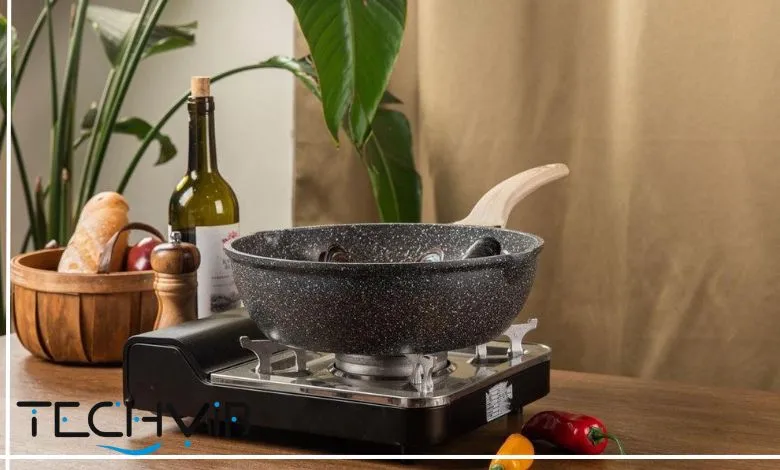
Ceramic
What is the best and safest material for cookware? The answer is Ceramic. But Ceramic nonstick requires gentle handling: cool the piece, then hand-wash with mild soap and a soft cloth, steering clear of dishwashers or metal scrubbers. For stains, soak in a vinegar-water mix or use baking soda, ensuring thorough drying to avoid spots.
Preheat with care and use low to medium heat to preserve the coating’s integrity. Compare ceramic vs stainless steel cookware to see differences. For simplified maintenance, the Best Dishwasher Safe Cookware Sets are a great deal.
Pros
- Non-toxic
- Distribute heat evenly
- Easy to clean up and maintain
- Lightweight
- Non-reactive to acidic food
Cons
- The coating degrades faster
- Not as durable as it should be
- Prone to staining
- Lower heat limit
- Can chip over time
How to Pick the Best Cookware Material for Your Needs
Selecting the right cookware material is key to enhancing your cooking efficiency and safety, as it affects everything from heat control to potential chemical exposure. Consider your cooking habits, stove type, and budget to avoid mismatches that could lead to frustration or waste. The best cookware material choices vary, but read on for targeted advice on matching materials to specific scenarios. For those prioritizing wellness, the best cookware set for health offers safe selections.
The Best Cookware Material for Health
The healthiest cookware prioritizes non-reactivity, ensuring no metals leach into meals, especially with acidic foods like tomatoes or citrus. Materials like stainless steel or pure ceramic stand out for their inert surfaces, free from coatings that might degrade and release particles over time.
They support even cooking without needing excessive oils, promoting nutritious preparations while minimizing exposure to potential toxins from wear or high heat. Check non-toxic cookware materials for more insights.
Additionally, options such as cast iron contribute trace minerals beneficially, without harmful additives, and their durability means less frequent replacement, reducing environmental impact. Glass also excels by being completely non-porous and chemical-free, ideal for baking where transparency aids monitoring without flavor alterations.
These choices foster safer kitchens by avoiding forever chemicals found in some coatings, ensuring long-term well-being through consistent, clean cooking. For daily routines, the best cookware material for everyday use emphasizes practicality. Don’t miss the best cookware non-toxic for purity.
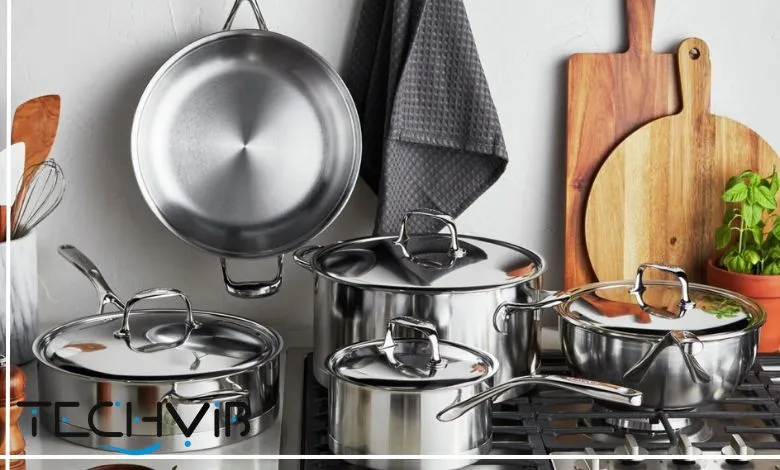
The Best Cookware Material for Everyday Use
For daily cooking, the best cookware set for everyday use should offer quick responsiveness and minimal upkeep, like stainless steel’s ability to handle frequent use without rusting or reacting. It heats uniformly for routine tasks such as stir-fries or soups, and its robustness means it withstands repeated washing cycles while retaining shape.
Everyday materials also benefit from versatility, as carbon steel provides lightweight handling for flipping eggs or veggies, developing a patina that eases cleanup over time.
Paired with affordability, these options encourage regular experimentation in the kitchen, balancing performance with practicality for seamless meal prep day after day. For safety queries, read about Tefal cookware safety.
Safest Cookware Material
Safest materials emphasize inertness and longevity, with stainless steel leading by resisting corrosion and avoiding chemical leaching, even under high heat. It’s free from coatings that could flake, making it trustworthy for family meals where purity matters most. This stability ensures no unwanted substances enter food, supporting health-focused cooking. The safest cookware material often includes these features.
Cast iron and pure ceramic follow closely, offering natural barriers against toxins while being durable enough to last generations without degrading. The Best Ceramic Cookware Sets Without Aluminum handle diverse recipes safely, from stews to bakes, providing peace of mind through their proven track record in avoiding harmful emissions or reactions.
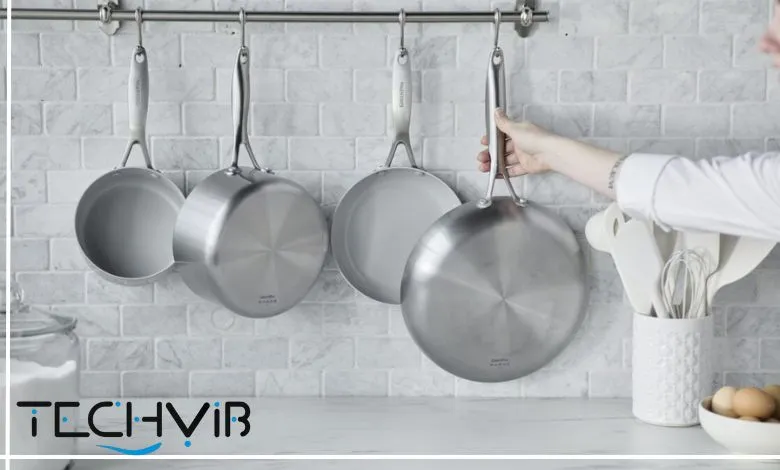
The Best Material for Pots and Pans
Pots and pans thrive with materials that distribute heat evenly, such as clad stainless steel, which layers metals for balanced boiling or simmering without hotspots. This construction supports everything from pasta pots to saucepans, ensuring consistent results and resistance to daily thermal stress. The best material for pots and pans focuses on such evenness.
Cast iron adds value for deeper vessels, retaining warmth for braises in Dutch ovens, while its heft provides stability on the stove. These choices blend functionality with endurance, making them reliable for core kitchen tools that see constant action. If space is limited, the Best Stackable Cookware Sets for Small Kitchens are ideal.
The Best Carbon Steel Cookware Set
Top carbon steel sets feature a lightweight design, rapid heating, and a seasoning that builds non-stick over time, ideal for searing or wok cooking with induction compatibility and oven safety up to high temps. Carbon steel is a strong contender for the best cookware material for health.
What Type of Cookware Is Best for Induction Cooking
Induction-compatible materials must be magnetic, like stainless steel or cast iron, which respond instantly to electromagnetic fields for efficient, cool-to-touch cooking. They provide precise control, heating only the vessel to reduce energy waste and kitchen heat, perfect for boiling or frying with minimal lag.
Carbon steel also excels here, offering lightweight agility for quick adjustments, while ensuring safety through even distribution that prevents burns or uneven results. These options maximize induction’s benefits, from speed to cleanliness, in modern setups. See induction-compatible cookware for suitable products.
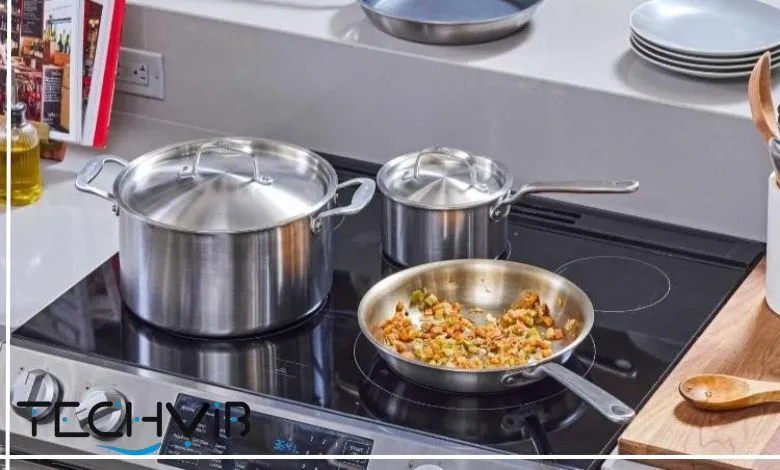
The Best Cookware Material for a Gas Stove
Gas stoves pair well with materials that handle direct flames, such as copper for its rapid conductivity, allowing fine-tuned heat for delicate sauces without scorching. Its responsiveness matches gas’s adjustable nature, promoting energy efficiency and culinary precision.
Stainless steel with clad bases offers durability against uneven gas heat, preventing warping while distributing warmth steadily for roasts or simmers. This combination ensures longevity and versatility on open flames. Explore the Best Cookware Sets for Gas Stoves for optimized sets.
What Is the Best Frying Pan Material
Frying pans perform optimally with carbon steel, which heats swiftly and seasons for natural release, excelling in high-heat searing where control prevents sticking. Its lightness aids flipping, making it a favorite for proteins or veggies. For specialized tools, try the best induction omelette pan.
Cast iron provides unmatched retention for crispy results, building flavors in one-pan meals while withstanding intense use without degrading. The best metal for cookware for frying often leans toward these. For overall selections, browse the Best Cookware Sets Available.
What Is the Best Cooking Pan Material
Cooking pans benefit from stainless steel’s clad design, offering even heating and non-reactivity for diverse recipes from stirs to braises. Its strength lies in handling varied techniques reliably.
Non-stick coatings simplify low-effort cooking, reducing oil needs and easing cleanup for quick weekday dishes. Budget shoppers can check the Best Nonstick Cookware Sets for $100 or Less, or Budget Ceramic Cookware, Top 5 Under €150.
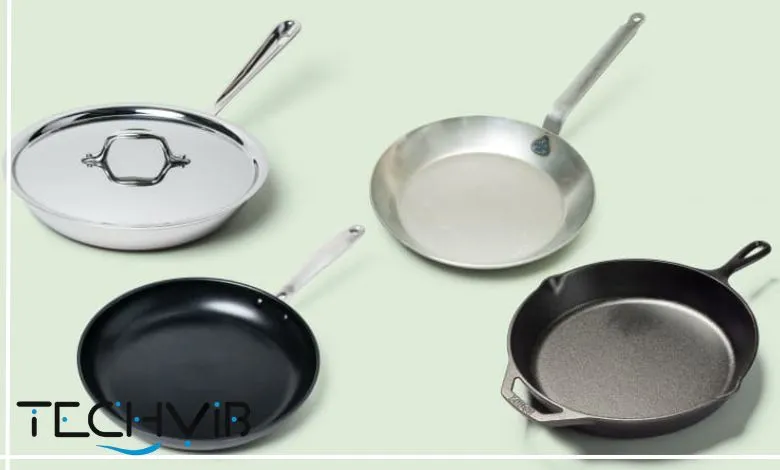
User Experience Analysis
In hands-on evaluations, stainless steel proved reliable for browning meats and deglazing sauces, with users noting its sturdy feel and easy transitions from stove to oven, though it required technique to avoid sticking.
Non-stick surfaces impressed with effortless food release during egg tests, but some reported quicker wear after repeated high-heat exposure. Cast iron shone in heat retention for cornbread baking, developing a valued patina over sessions, yet its weight challenged maneuverability in flipping tasks.
Carbon steel offered a lighter alternative to cast iron, seasoning well for stir-fries and responding nimbly to adjustments, as confirmed in searing trials. Aluminum heated rapidly for boiling, but unevenness appeared without anodizing. Copper provided precise control in sauce reductions, with quick cooling noted positively. Ceramic and stone coatings delivered smooth cleanup in roasting veggies, though fragility concerns arose from drop tests.
Enameled cast iron combined aesthetics with non-reactivity in acidic simmers, while glass allowed visual monitoring in bakes but felt less robust on stovetops. Tests involved everyday scenarios like frying, boiling, and oven use, revealing how materials balance performance with user comfort. This aligns with the cookware materials guide for practical insights.
Comparison Table: Different Types of Cookware Materials
| Type of Material | Best Use | Price Range |
|---|---|---|
| Stainless Steel | Versatile cooking like sautéing | Medium to High |
| Non-Stick Coated | Low-fat frying | Low to Medium |
| Cast Iron | Searing, baking | Low to Medium |
| Carbon Steel | High-heat stir-fries | Medium |
| Aluminum | Quick boiling | Low |
| Copper | Precision sauces | High |
| Ceramic | Gentle baking | Medium |
| Stone (Granite) | Everyday frying | Medium |
| Enameled Cast Iron | Braising | Medium to High |
| Glass | Oven baking | Low |
| Type of Material | Nontoxic | Induction Compatibility | Dishwasher Safe |
|---|---|---|---|
| Stainless Steel | Yes | Yes (if magnetic base) | Yes |
| Non-Stick Coated | Varies | Varies (newer yes) | No (hand wash recommended) |
| Cast Iron | Yes | Yes | No |
| Carbon Steel | Yes | Yes | No |
| Aluminum | Yes (anodized) | No | Yes |
| Copper | Yes (lined) | No (unless clad) | No |
| Ceramic | Yes | Yes (with base) | No |
| Stone (Granite) | Yes | Yes (with base) | No |
| Enameled Cast Iron | Yes | Yes | Yes |
| Glass | Yes | No | Yes |
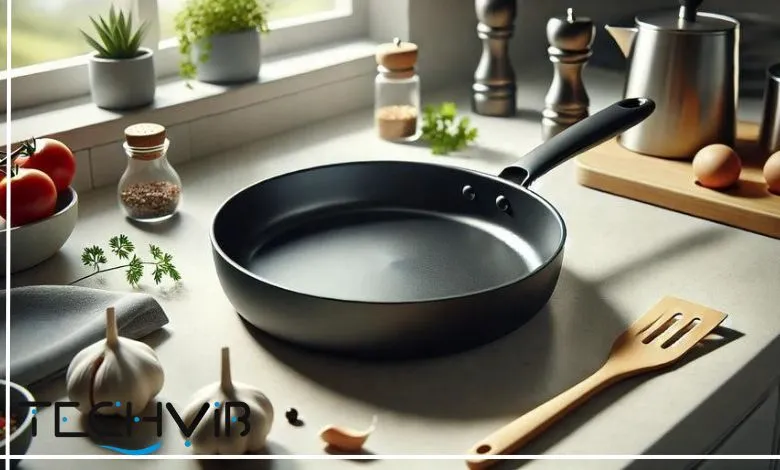
Conclusion
Delving into the realm of cookware materials opens up a spectrum of possibilities, each crafted to align with unique cooking aspirations and lifestyles. By considering elements such as the best cookware material for health, usability across different stoves, and long-term safety, you empower yourself to curate a kitchen arsenal that not only streamlines preparation but also safeguards well-being. Ultimately, the right material transforms routine cooking into an art form, ensuring your kitchen remains a haven of flavor and functionality for years to come. Don’t miss the best ceramic cookware for natural options.
What is the best cookware material for everyday cooking?
Stainless steel is often considered the best all-around choice because it is durable, non-reactive, and works for most cooking techniques.
Is nonstick cookware safe to use?
Modern nonstick cookware is generally safe when used at medium or low heat and not overheated. The key is to avoid scratching the surface and never use metal utensils on it.
Why do chefs prefer stainless steel over other materials?
Chefs prefer stainless steel because it heats evenly, develops a natural fond for sauces, and lasts a long time without warping or reacting with acidic foods.
What is the main advantage of cast iron cookware?
Cast iron retains heat extremely well, making it ideal for searing, frying, and slow cooking. It also becomes naturally nonstick with proper seasoning.
Is ceramic cookware better than stainless steel?
Ceramic cookware is lighter and offers a nonstick surface without chemicals, but stainless steel is more durable and versatile for high-heat cooking.
